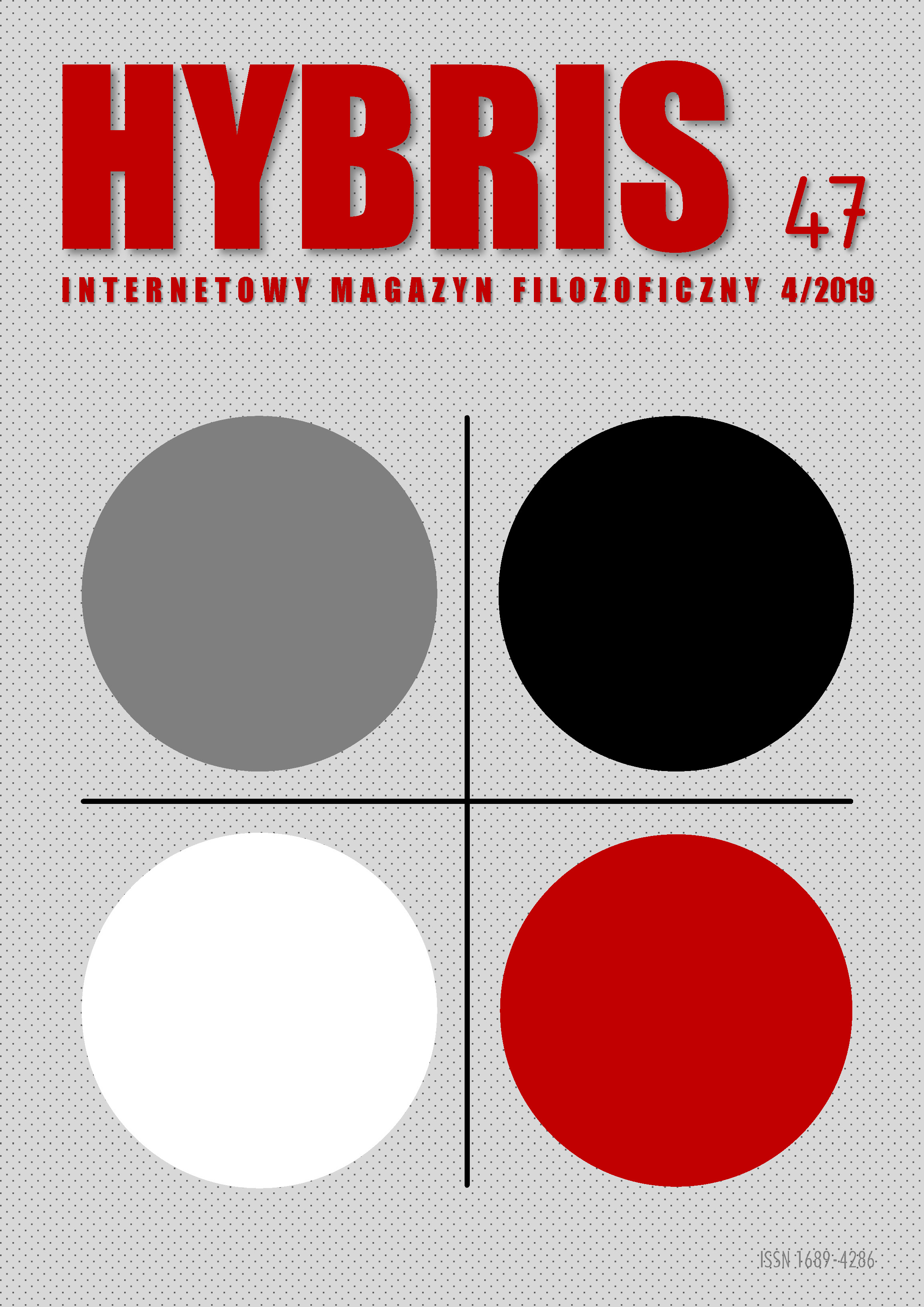The human zoo - the dark side of collecting
DOI:
https://doi.org/10.18778/1689-4286.47.04Keywords:
human zoo, collecting, collections, human dignityAbstract
The European way of classifying the world, from the Middle Ages, to the nineteenth century, set up his own, universal system by which one should determine what is valuable, and exclude what is unnecessary. In this system, naturally, the highest place in the hierarchy belonged to Europe and Europeans. As a result of such thinking assuming the superiority of one society over another, so-called "human zoos" were created, constituting the missing link in collecting at that time. We are talking about the places where living people played scenes related to life in their indigenous surroundings. This phenomenon for Europeans was a substitute for a journey to the “wild land”. For the first time, the human zoo appeared at the courts of the magnates who financed overseas expeditions to the "New World". His development is a nineteenth-century "living paintings" where for "50 cents you could travel around the world”. In principle, the human zoo can be compared to peculiar collector's collections. Undeniably, they were humiliating and degrading human dignity. This work aims to bring the topic of the problem to the attention and put it as a topic for a broader analysis on the ethical basis.
References
Ames E. (2009). Carl Hagenbeck’s Empire of Entertainments, Washington: University of Washington Press.
View in Google Scholar
Benjamin W. (2005). Pasaże, tłum. Ireneusz Kania, Kraków: Wydawnictwo Literackie.
View in Google Scholar
Bergman J. (2000). Ota Benga the pygmy put on display in the zoo, CEN Technical Journal 14(1).
View in Google Scholar
Biblia Tysiąclecia (Księga Rodzaju, 6,19-20).
View in Google Scholar
Bradford, P.V.,Blume, H. (1992). Ota Benga; The Pygmy in the Zoo, New York: St. Martin's Press.
View in Google Scholar
Brits K, Cichocka A. (2009). Zróżnicowanie przekazów niewerbalnych w społeczeństwie wielokulturowym – przykład Afryki Południowej, Komunikowanie międzykulturowe, Poznań: Wydawnictwo Naukowe UAM.
View in Google Scholar
Corbey R. (1993). Ethnographic showcases, 1870–1930, „Cultural Anthropology” t. 8, nr 3.
View in Google Scholar
DOI: https://doi.org/10.1525/can.1993.8.3.02a00040
Crais C,Scully P. (2009). Sara Baartman and the Hottentot Venus: A Ghost Story and a Biography. Princeton: Princeton University Press.
View in Google Scholar
DOI: https://doi.org/10.1515/9780691238357
Davies C. (2003). The Return of El Negro, Johannesburg: Penguin Books.
View in Google Scholar
Elsner J. Cardinal R. (1994). Introduction, The Culture of Collecting, London: Reaktion Books.
View in Google Scholar
Glenn P. (2002). Objects of Culture. Ethnology and Ethnographic Museums in Imperial Germany, North Carolina: The University of North Carolina.
View in Google Scholar
Groesen M. (2008) The Representations of the Overseas World in the De Bry Collection of Voyages (1590–1634). Lejda–Boston. Journal of Early Modern History 12 (2008) 1-24
View in Google Scholar
DOI: https://doi.org/10.1163/138537808X297135
Kłos M. (1890). Szkice z wystawy paryskiej, Rzeszów.
View in Google Scholar
Kopaliński W. (1990). Słownik wyrazów obcych i zwrotów obcojęzycznych, Warszawa: Wiedza Powszechna.
View in Google Scholar
Luty, P. (2014). Trwa nagonka na Belgów. Internet wypomina im ludzkie zoo. https://natemat.pl/108563,trwa-nagonka-na-belgow-internet-wypomina-im-ludzkie-zoo (dostęp 28.12.2019)
View in Google Scholar
Marks K. (1953). Przyczynek do krytyki ekonomii politycznej, Warszawa: Książka i Wiedza.
View in Google Scholar
Mitchell T. (1992). Orientalism and the Exhibitionary Order, Colonialism and Culture, Michigan: University of Michigan Press.
View in Google Scholar
Pawlik J. (2008). Egzotyzm – wątpliwy zachwyt odmiennością, Misje w XIX wieku, Pieniężno.
View in Google Scholar
Pawłowska A. (2006). O potrzebie tworzenia kolekcji sztuki afrykańskiej, Muzeum sztuki. Od Luwru do Bilbao, Katowice .
View in Google Scholar
Pomian K. (1996). Zbieracze i osobliwości. Paryż Wenecja XVI –XVIII wiek, Warszawa: Państwowy Instytut Wydawniczy.
View in Google Scholar
Popczyk M. (2008) Estetyczne przestrzenie ekspozycji muzealnych, Kraków: Universitas.
View in Google Scholar
Schreiber H. (2012) Koncepcja sztuki prymitywnej. Odkrywanie oswajanie i udomowienie Innego w świecie Zachodu. Warszawa: Wydawnictwo Uniwersytetu Warszawskiego.
View in Google Scholar
DOI: https://doi.org/10.31338/uw.9788323522430
Schreiber H. (2014). Z „czarnych” kart historii stosunków międzynarodowych – „ludzkie zoo”, Społeczeństwo i polityka, Pułtusk, nr.2.
View in Google Scholar
Sommer M. (2003). Zbieranie. Próba filozoficznego ujęcia. Warszawa: Wydawnictwo Oficyna Naukowa.
View in Google Scholar
Tuchańska B. (2012). Dlaczego prawda? Prawda jako wartość w sztuce, nauce i codzienności, Warszawa: Wydawnictwo Poltex.
View in Google Scholar
Wieczorkiewicz A. (2012). Drugie życie Saartjie Baartman, Teksty drugie, nr. 2.
View in Google Scholar
Wieczorkiewicz A. (2006) Epoki osobliwości. „Osobliwość” jako kategoria organizująca i mediująca w dyskursie muzealnym. Muzeum sztuki. Od Luwru do Bilbao, Katowice.
View in Google Scholar
Wieczorkiewicz A. (2011) Hotentocka skóra Saartjie Baartman, Teksty Drugie 2011, nr. 4.
View in Google Scholar
Yaya I. (2008) Wonders of America. The Curiosity Cabinets as a Site of Representation and Knowledge, „Journal of the History of Collections”, t. 20, vol. 2.
View in Google Scholar
DOI: https://doi.org/10.1093/jhc/fhm038
Downloads
Published
How to Cite
Issue
Section
License

This work is licensed under a Creative Commons Attribution-NonCommercial-NoDerivatives 4.0 International License.






